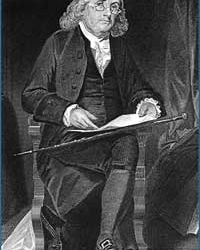Over the centuries, the world of art has witnessed the emergence of many iconic sculptors. From Michelangelo to Picasso, Donatello to Rodin, these artists have created some of the most intricate and complex works ever seen. Some of the most famous sculptures in the world include Michelangelo’s “David”, Rodin’s “The Thinker”, the “Nike of Samothrace”, and the “Venus de Milo.” Beyond the undeniable beauty of these masterpieces, they are also believed to have set a high standard for artists who followed.
A common thread among most of these great historical artists is that they were all men. This does not mean that only men can become great artists. However, it seems that it is only in recent times that we have learned more about the legendary female artists in history.
While there have been many talented female sculptors throughout history, one woman broke the mold regarding both gender and race at a time when America was rife with internal conflict. Her name is Edmonia Lewis.
Early Years

Image of sculptor Edmonia Lewis on a postage stamp. (Photo: Grunge).
The early years of Edmonia Lewis are somewhat shrouded in mystery. No one can clearly recall her exact birth date, as Edmonia claimed to have been born in different years throughout her life. Some studies suggest she was born in Upstate New York in 1844, although the exact day and month remain undisclosed. Edmonia had mixed heritage as her father was of African descent and her mother was a Native American from the Ojibwa tribe. She is believed to have been orphaned at a young age and was raised by her mother’s tribe.
As she grew older, Edmonia attended Oberlin College, and it was there that her artistic talent and sculpting skills became much more apparent. However, her time at Oberlin was not the most pleasant experience, as it nearly cost her life. According to Smithsonian Magazine, in 1862, Lewis was attacked by a mob of white people after being accused of poisoning two of her classmates. She was severely beaten but recovered and was ultimately acquitted at trial.
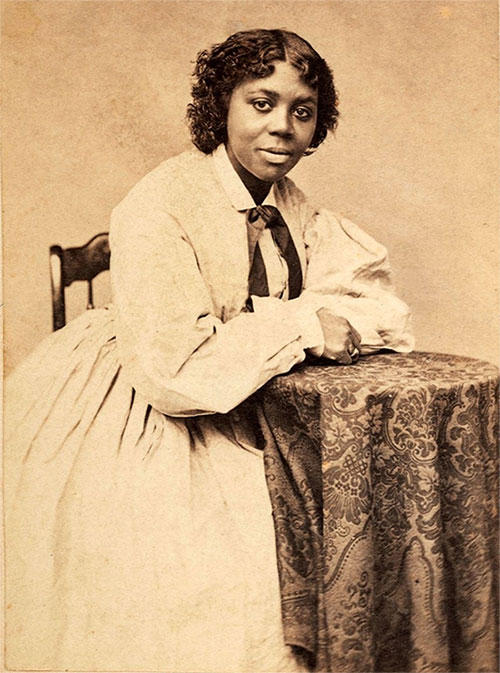
Portrait of Edmonia Lewis in her youth. (Photo: Grunge).
From Boston to Rome
After facing early hardships, Edmonia moved to Boston, where she became acquainted with sculptor Edward Brackett and the legendary abolitionist William Lloyd Garrison. It was there that she began to truly step into the world of commercial art.
Unlike other sculptors of her time, Edmonia Lewis was not formally trained. Partially due to her being a woman and a person of African descent. During this period in America, sculptors were predominantly white men. They were primarily the ones allowed to attend classes on subjects such as anatomy. Consequently, Edmonia began working, with sculptor Edward Brackett from Tufts University as her mentor.
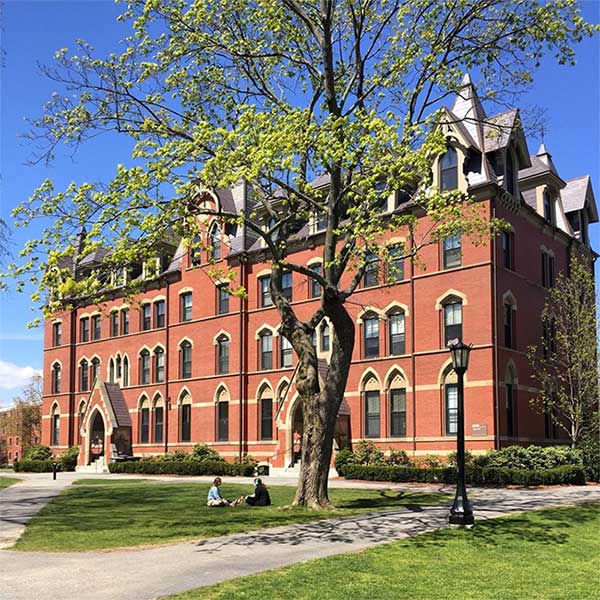
Tufts University in the United States. (Photo: Grunge).
After gaining some traction in America, Edmonia decided to move to Rome, Italy, to live and work. Upon her arrival in 1866, she befriended another American sculptor named Harriet Hosmer, who supported Edmonia in her ambitions. At that time, she created some of the most famous works of her career.
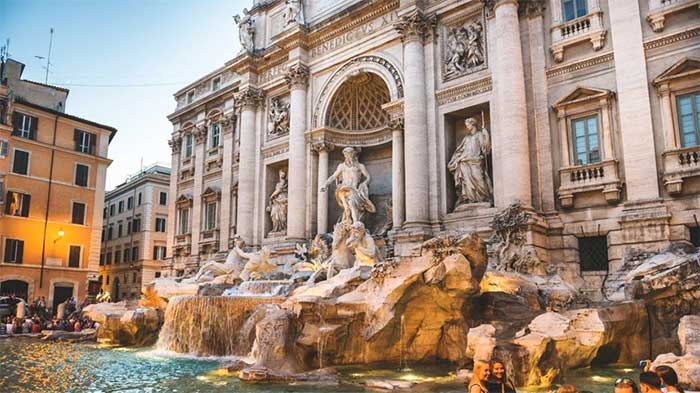
Edmonia decided to move to Rome, Italy. (Photo: Grunge).
Themes and Inspiration
Every artist needs a theme as well as a source of inspiration to create art. Edmonia’s early works revolved around sculptural portraits of famous abolitionists and supporters. According to Smithsonian Magazine, she began selling plaster and clay medallions featuring images of Wendell Phillips, William Lloyd Garrison, and John Brown.
Her first significant financial and commercial success came in 1864 when she created a bust of Colonel Robert Shaw, the commander of the 54th Massachusetts Infantry during the Civil War.
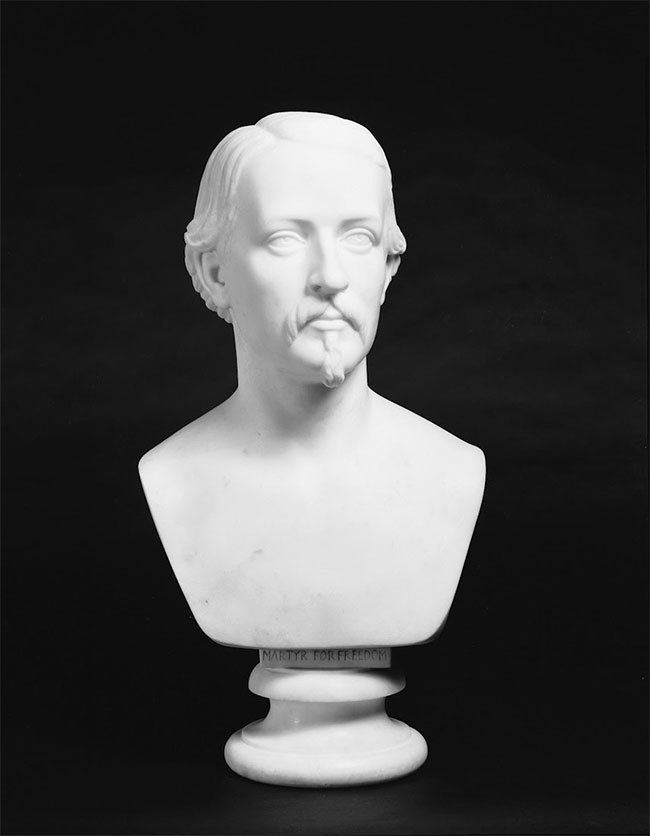
Edmonia Lewis’s first sculpture, Colonel Robert Shaw. (Photo: Grunge).
The sale of the bust allowed her to gather enough funds to move to Europe. Throughout her career, Edmonia’s works often featured portraits and images of famous figures, or were somehow inspired by her heritage as a woman of African and Native American descent.
Most Famous Sculptures
Throughout her career, Edmonia created many intricate sculptures. Her first bust of Colonel Robert Shaw helped to popularize her reputation, and when she moved to Rome, Edmonia’s talent truly began to shine. According to the Metropolitan Museum of Art, in 1867, she cast one of the most famous works of her career, titled “Forever Free.” This sculpture marked the ratification of the 13th Amendment to the U.S. Constitution, abolishing slavery in the nation.
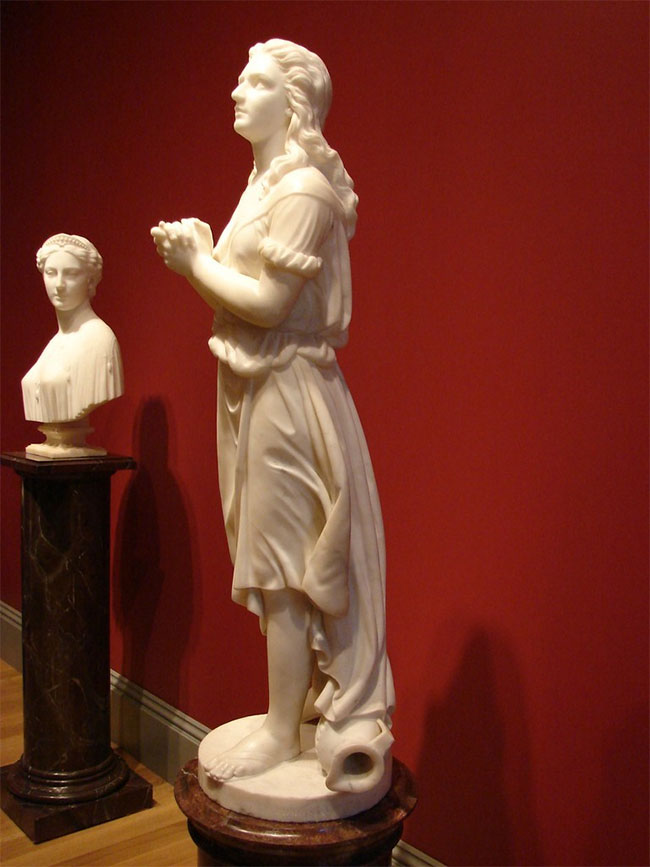
Sculpture “Hagar” by Edmonia Lewis. (Photo: Grunge).
According to the Smithsonian American Art Museum, Edmonia created many other beautiful sculptures, including “The Old Arrow Maker and His Daughter,” “Hagar in the Wilderness,” and “Hiawatha” at the Metropolitan Museum of Art.
However, perhaps her most famous sculpture is “The Death of Cleopatra.” This piece stands over 1.5 meters tall and weighs approximately 1,400 kg. Carved from white marble, the sculpture depicts the moment of Cleopatra’s death, crafted by Edmonia herself. She shipped her work back to America for display at the Centennial Exhibition in 1876. Although the statue received somewhat mixed reviews due to the “graphic nature” of the subject, it was granted a place in the memorial dedicated to American artists.
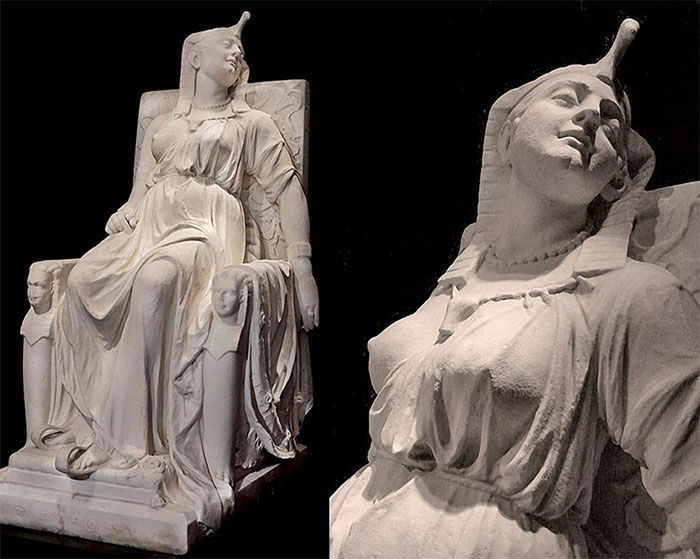
Edmonia’s most famous sculpture – “The Death of Cleopatra.” (Photo: Grunge).
Legacy and Later Generations
Although Edmonia Lewis is recognized as one of the first professional Black sculptors in history, many details about her life remain unknown. The latter part of her life appears to have been spent in Europe, where she continued to create other exquisite works of art. According to ThoughtCo, she completed her final sculpture in 1883 and is said to have been visited by Frederick Douglass while living in Rome.
While Edmonia created several remarkable sculptures, sadly, many of them have been lost over time. Some of her remaining works, such as “The Death of Cleopatra,” “Hagar,” and “Forever Free” have found homes in places like the Smithsonian Institution and the Metropolitan Museum of Art.
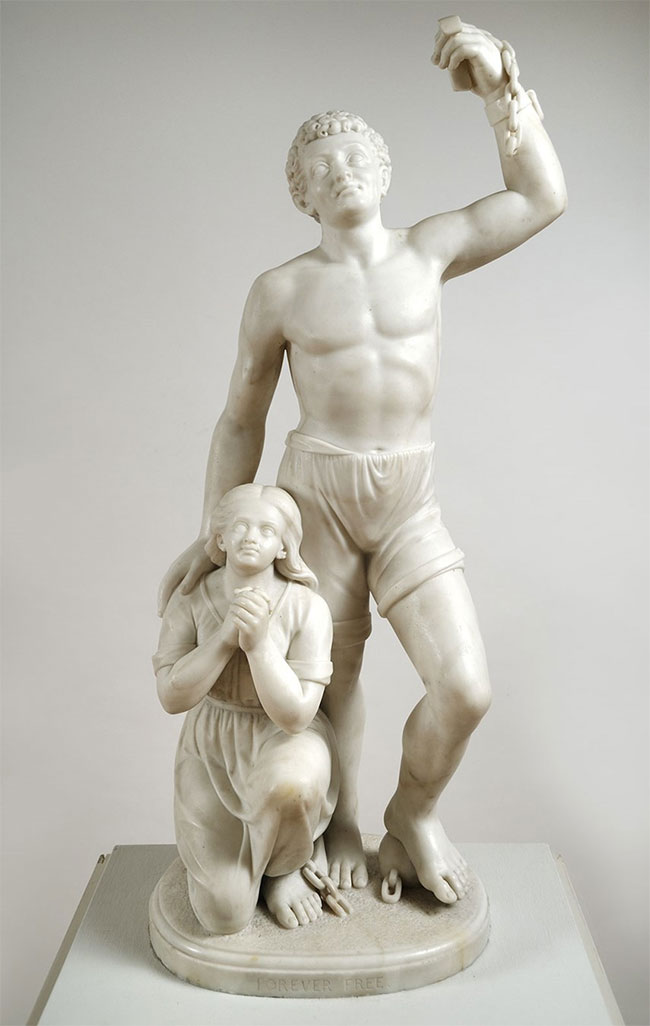
Sculpture “Forever Free” by Edmonia Lewis. (Photo: Grunge).
Just like the historical record of the rest of Edmonia’s life, the details surrounding her death remain elusive, as her date of death has been recorded in different years. However, recent research indicates that Edmonia passed away on September 17, 1907. According to the New York Post, she was initially buried in an unmarked grave and was eventually exhumed in 2012 at St. Mary’s Catholic Cemetery in London, England. Edmonia now has a proper gravestone, honoring her as a sculptor.








































